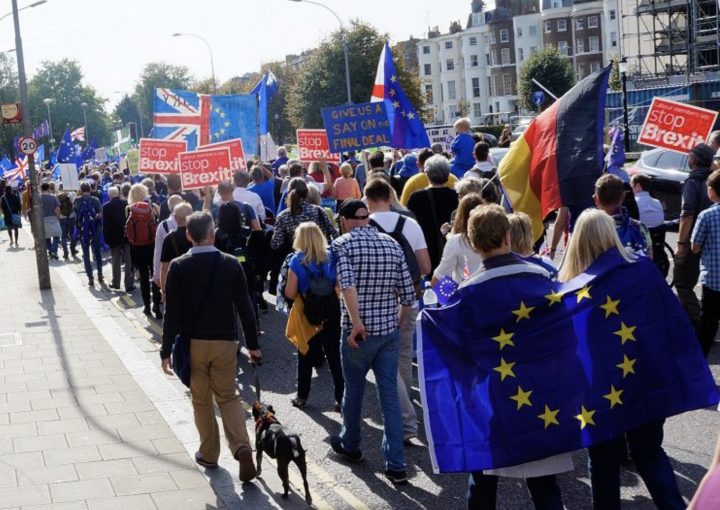Victoria Honeyman, University of Leeds for The Conversation
As the clock ticks down to March 29 2019, all of the political manoeuvring, negotiating, arguing and fighting is coming to a peak. In the two and a half years since the 2016 EU referendum, views on both sides have hardened and agreement still seems as far away as it was the day after the referendum.
With Theresa May’s withdrawal agreement disliked by all sides, and voted down by an unprecedented majority in the House of Commons, everyone is wondering what can and should be done next?
While there are a number of options, some are more realistic than others. But in these turbulent times, it is impossible to conclusively rule any out. Here are some possibilities.
Present a new deal
Having seen her deal roundly rejected by parliament, the most obvious move for May might seem to be to go back to the EU to renegotiate. But the EU-27 have been clear from the day of the referendum result about what they were willing to offer. As the larger partner in the negotiations, and with a legal and political framework to protect, the EU could not rip up its own rules for one country. Indeed, the withdrawal agreement stretched the EU’s own red lines and they have repeatedly said that they could not, and would not, offer any more.
With the withdrawal agreement sunk, renegotiating with the EU along the same lines is a waste of time. The only type of renegotiation likely to have any chance of success is one where the larger issues, such as the customs union, are put back on the table. That seems to be something which May appears unwilling to do. It is hard to see how a new deal, without such renegotiation, would be any different to the old deal.
Cross-party talks
May has complained that while members of parliament have been very clear about what they won’t accept, they haven’t given any clear steer on what they will accept. That is undoubtedly true, largely because the House of Commons does not have a settled view of what the withdrawal agreement should look like or what the future relationship between the UK and EU should be.
In light of this, May has suggested that one way forward might be cross-party talks. But this is not an easy solution. May has enemies on all sides, with members of the Labour Party, Liberal Democrats, SNP and DUP all offering different solutions to her problem. Few of them will agree with May’s existing red lines, or with each other, making agreement almost impossible.
Another issue is the lack of time, with less than 80 days before the UK leaves the EU. Were these discussions to have taken place after the 2017 election, or when May became prime minister, agreement might just have been possible – but at this late stage, and with May appearing to be unwilling to compromise in any meaningful way, cross-party agreement looks unattainable.
Extend Article 50
The lack of time is an issue for Remainers and Leavers alike. Negotiation, a general election, another referendum – these all take time and Britain is scheduled to leave the EU on March 29. Article 50 could be extended, but this requires the agreement of the EU. In order for the UK to request this extension, and for the EU to agree, a practical plan of action would be needed to convince both sides that there was some point in an extension. While it is likely that an extension to article 50 may be sought, it is just a delay, not a solution.
Second referendum
For many of the 48% who voted to remain in the EU, a second referendum could be the answer to their prayers. Key Leave figures are under investigation for alleged irregularities during the referendum campaign and the British public are a lot more knowledgeable about the European Union now than they were in 2016. Another referendum might deliver a death blow to Brexit. However, there is no guarantee that it would deliver a Remain vote, and a vote could create even more divisions within society. The possibility of a second referendum is increasingly likely, but is still a long way off.
No-deal Brexit
Of all the options, the only certainty is that if no further action is taken, no deals agreed, no referendum or general election, then the UK will leave the EU on March 29 with no deal. This would mean Britain would revert to trading on World Trade Organization rules. No other nation in the world trades exclusively on WTO rules and the economic damage would be extreme.
Delays at ports, and the issue of the Northern Irish border would also be hugely divisive and damaging for the UK economy. Trade deals take time, often years, to negotiate so the pain would not be short term for Britain. With no realistic benefits for the UK, it is hard to see why anyone would pursue this as a positive option.
None of the options open to the UK government and parliament are particularly attractive – and all have long-term costs – but the usual practice is that when the parliament of the UK cannot make a decision, the issue is put back to the public. Whether that can realistically be done now is hard to tell but no democracy should ever avoid the opinions of its own people.![]()
Victoria Honeyman, Lecturer in British Politics, University of Leeds
This article is republished from The Conversation under a Creative Commons license. Read the original article.










